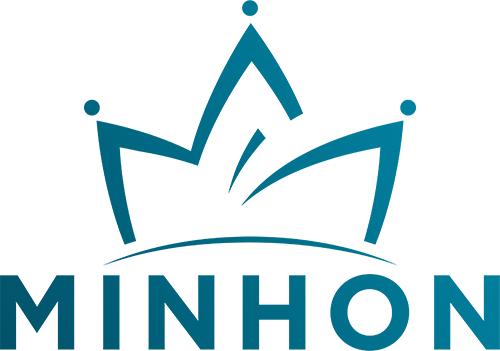One of the most nuanced yet impactful aspects of micro-engagement strategies is determining the optimal timing and frequency of these interactions. Poorly timed or overly frequent micro-interactions can lead to user fatigue, disengagement, or even app uninstallation. Conversely, well-calibrated touchpoints can foster a sense of personalized care, encouraging continued user activity and loyalty.
In this comprehensive guide, we will delve into advanced, actionable techniques to analyze, plan, and implement micro-engagement timing and frequency. Drawing from data-driven frameworks, real-world case studies, and technical best practices, this article aims to equip product managers, UX designers, and developers with the tools to fine-tune their micro-engagement cadence for maximum retention impact.
Table of Contents
Understanding User Behavior and Data Collection
The foundation of effective timing and frequency management begins with comprehensive understanding of your users’ behavior patterns. Use analytics tools such as Mixpanel, Amplitude, or Firebase Analytics to collect granular data on session frequency, session duration, feature usage, and interaction sequences. This data enables you to identify:
- Active periods: When are users most engaged within a session?
- Drop-off points: At what moments do users tend to disengage or reduce activity?
- Response latency: How quickly do users respond to previous micro-interactions?
For example, if data shows that a majority of users open the app within 15 minutes of initial login but stop engaging after 10 minutes, this window becomes critical for timed micro-engagements. Ensure your tracking captures contextual cues such as time since last interaction, session length, and user segmentation (new vs. returning).
**Expert Tip:** Use event-based triggers—for instance, if a user completes a milestone, schedule a micro-interaction within 2-5 minutes to reinforce the achievement. This tight coupling between behavior and timing increases relevance and response rates.
Establishing a Data-Driven Timing Framework
Developing an effective timing framework involves translating behavioral insights into concrete scheduling rules. Follow these steps:
- Segment your users: Divide users based on activity patterns, engagement levels, and lifecycle stage (e.g., new, active, churned).
- Identify trigger points: Pinpoint key actions or events—such as completing a task, reaching a milestone, or inactivity periods—that warrant micro-interactions.
- Analyze response times: Calculate average response latency from previous micro-engagements or notifications to determine optimal delay intervals.
- Create timing rules: For each segment, define specific time windows post-triggering event when micro-interactions are most effective.
**Example:** For new users (less than 7 days), schedule a micro-engagement 5 minutes after onboarding completion to encourage feature exploration. For long-term users, wait 24 hours before nudging them with personalized content or rewards.
**Technical note:** Use a combination of in-app timers, server-side scheduling, and user state management to automate these timing rules reliably and flexibly.
Practical Scheduling Strategies
Implementing scheduling strategies requires balancing user engagement with avoiding overload. Here are proven approaches:
| Strategy | Description | Best Use Cases |
|---|---|---|
| Time-Based Scheduling | Schedule micro-interactions at fixed intervals based on user segments or behaviors. | Daily check-ins, weekly progress prompts. |
| Event-Triggered Timing | Activate interactions immediately after specific user actions or inactivity. | Milestone completions, inactivity periods. |
| Adaptive Timing | Adjust timing dynamically based on user responsiveness and engagement history. | Power users vs. casual users. |
**Expert Tip:** Employ an A/B testing approach to compare different timing rules, measuring impact on retention, session length, and user satisfaction metrics.
**Implementation detail:** Utilize a flexible scheduling engine—either within your backend system or via a third-party service like Braze or Leanplum—that can handle complex conditional logic and provide real-time adjustments.
Case Study: Adjusting Micro-Interaction Frequency in a Real App
A fitness app observed that users who received motivational prompts more than twice daily exhibited signs of annoyance and increased churn rates. To optimize, the product team implemented a data-driven adjustment:
- Data analysis: Revealed that user responsiveness peaked at 1-2 prompts per day, with diminishing returns beyond this threshold.
- Strategy deployment: Used in-app timers and server-side logic to cap daily prompts, with dynamic adjustment based on user activity level and responsiveness feedback.
- Outcome: 15% increase in session duration, 8% decrease in churn, and higher user satisfaction scores.
This case underscores the importance of continuous monitoring and flexible timing rules, allowing for real-time calibration based on user response patterns.
Troubleshooting and Common Pitfalls
Implementing effective timing and frequency strategies is complex. Be mindful of these common pitfalls:
- Overloading users: Bombarding users with frequent micro-interactions can lead to fatigue. Always test different frequencies and monitor opt-out rates.
- Inconsistent timing: Relying solely on static schedules ignores individual differences. Use adaptive timing based on real-time data.
- Ignoring user context: Failing to consider time zones, device context, or user activity patterns reduces relevance.
**Expert Tip:** Incorporate user feedback surveys and in-app behavior signals to refine timing rules periodically.
Final Recommendations and Connecting to Broader User Lifecycle Strategies
Optimizing the timing and frequency of micro-engagements is a critical lever for boosting user retention. By systematically collecting behavioral data, establishing dynamic timing frameworks, and continuously testing and refining scheduling rules, you create a personalized engagement environment that respects user autonomy while fostering ongoing activity.
Remember, effective micro-engagement timing complements larger user lifecycle strategies. It supports onboarding, encourages habitual use, and sustains long-term loyalty, ultimately reinforcing the core value proposition highlighted in your foundational content at {tier1_anchor}.
For a deeper dive into the broader context of user retention tactics, explore our comprehensive guide on {tier2_anchor}. Implementing these advanced timing strategies will position your product at the forefront of user-centric engagement, ensuring sustained growth and satisfaction.





